NNCI Image Contest 2022 - Whimsical
Most Whimsical
Artists in this category playfully used micro and nanoscale images as the foundation to build scenes. Please check out the images below and read a little about the research behind them.
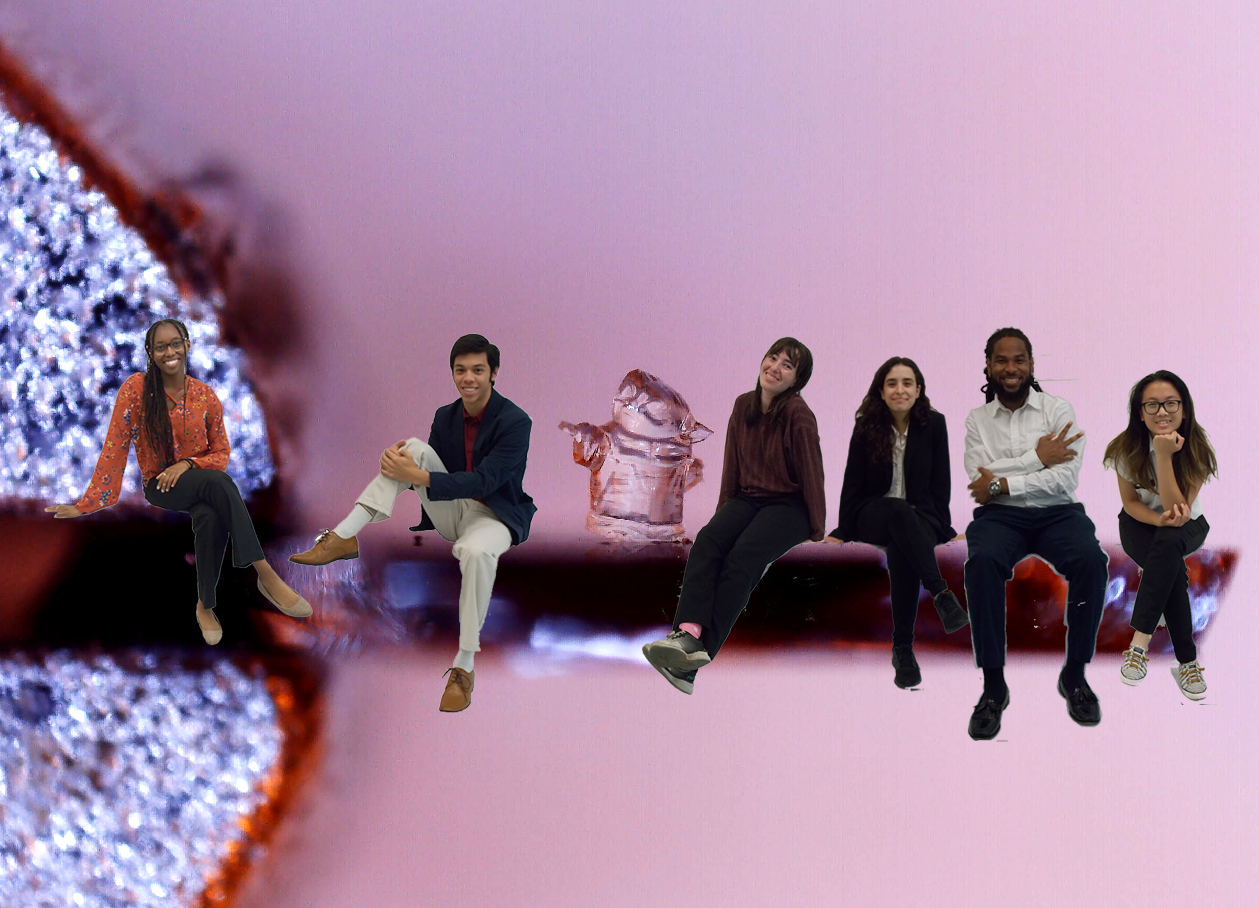
The 2022 CNF REU & Baby Yoda!
Artists: Edward Camacho, Garry Bordonaro, and Melanie-Claire Mallison
NNCI Site: Cornell NanoScale Science and Technology Facility (CNF)
Tool: CNF NanoScribe
Edward Camacho used the CNF’s NanoScribe to create a 1 mm tall Baby Yoda standing on a beam. The 10x, IP-Q, and silicon substrate were used. Garry Bordonaro took the photographs of the CNF REU interns, and Melanie-Claire Mallison photoshopped them onto the beam to keep Baby Yoda company!
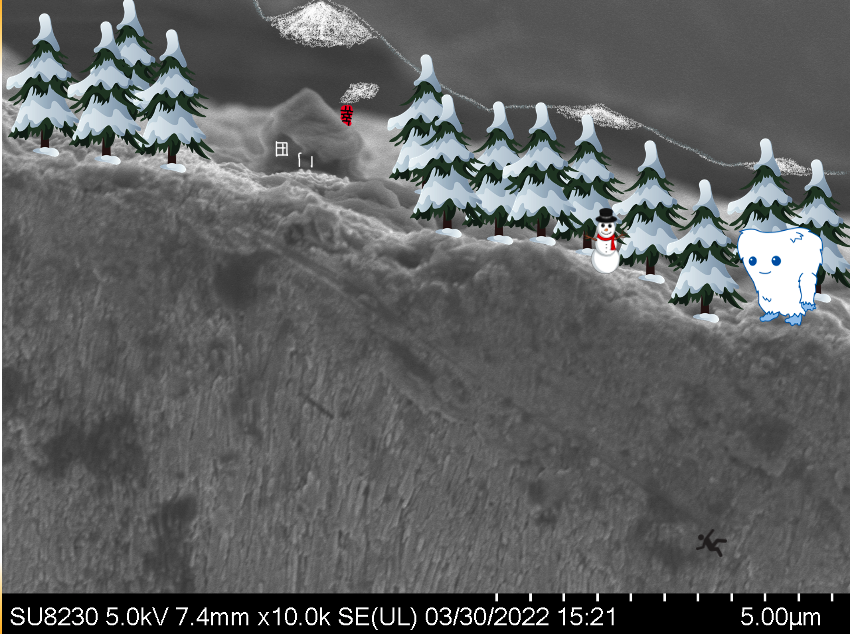
A Beautiful Winter Day
Artist: Ed Daisey, DDS-PhD Candidate, University of Minnesota
NNCI Site: MiNIC
Tool: Scanning Electron Microscope
Ahhh yes, another beautiful winter day in Minnesota. You just got in from making a snow man with your buddy. You hear the wind howling in the distance as your fireplace crackles in the background. You take a sip of your hot chocolate as you write your dissertation. *sips* Ahhh. How can life get any cozier than this? Then you realize… your buddy has been gone for some time now. They went to get firewood, like what - an hour ago? Weird.
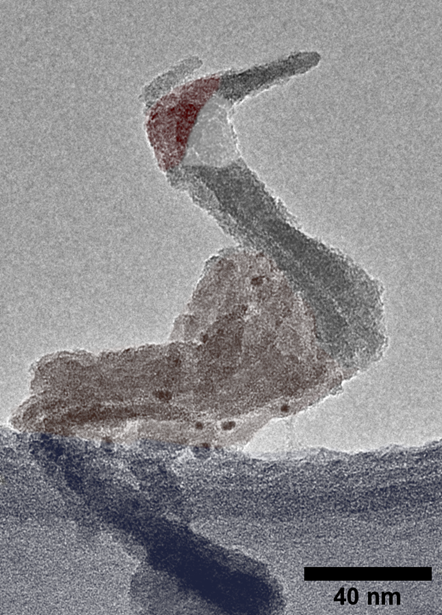
Sandhill Crane
Artists: Shawn Wimer (PhD student) and Ufuk Kilic (post doc); UNL
NNCI Site: Nebraska Nanoscale Facility
Tool: FEI Tecnai Osiris (S)TEM
This image is of a helical silicon nanostructure and a bit of extra broken material from another structure hanging from the carbon nanofilm of a TEM grid. The nanostructures are deposited as a dense film, usually 100-300 nm thick, and have optical applications related to the change in polarization of incident and transmitted light.
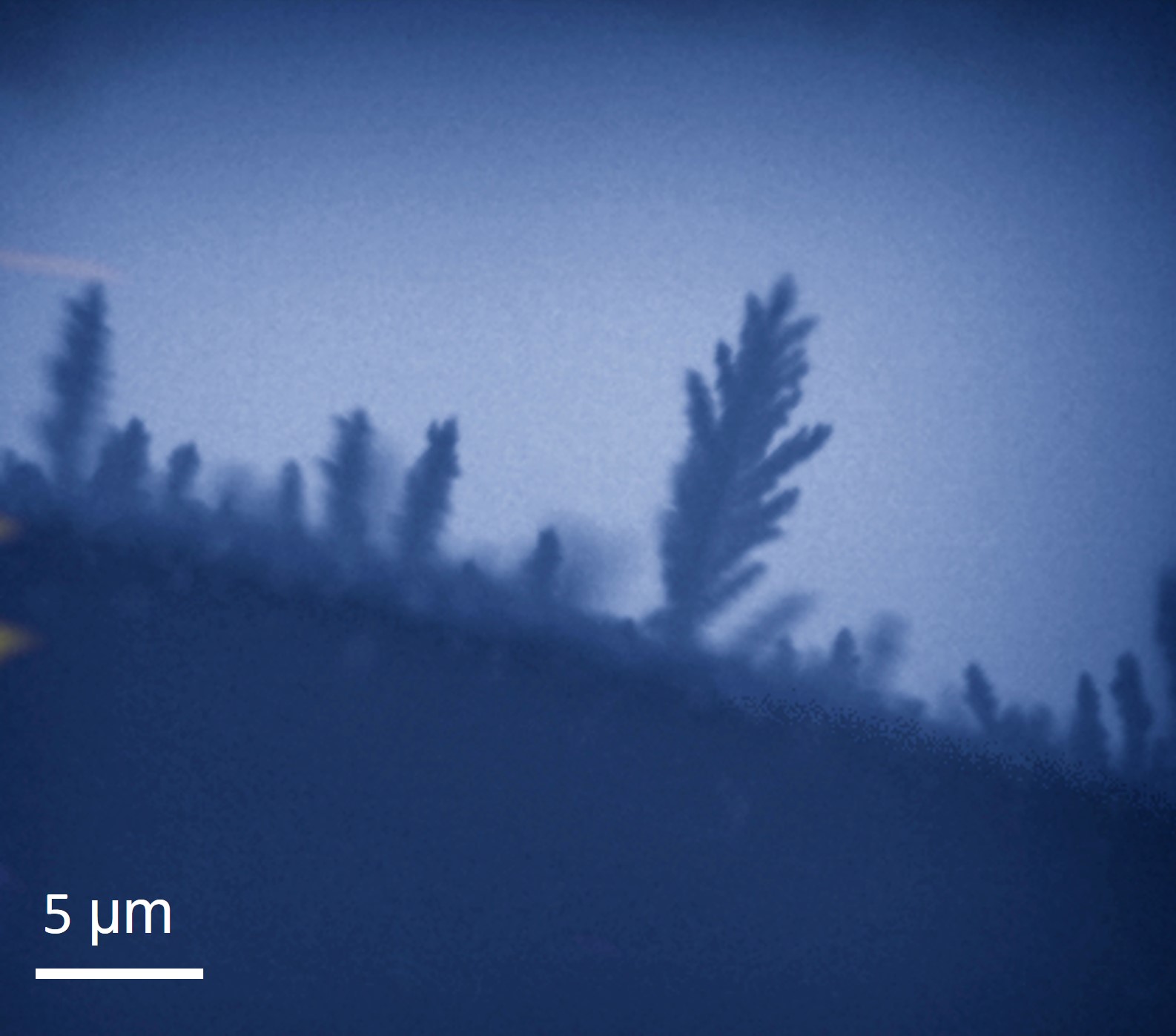
Ice Tree Under Night Sky
Artist: Sreekiran Raveendran Pillai, Postdoctoral Researcher, NC State University
NNCI Site: Research Triangle Nanotechnology Network (RTNN)
Tool: Horiba XploRA PLUS Confocal Raman Microscope
Image captured from the edge of a glass slide coated with icephobic material. The ice grows on the uncoated edge and propagates away from the surface, in a shape of which is identical to pine forests.
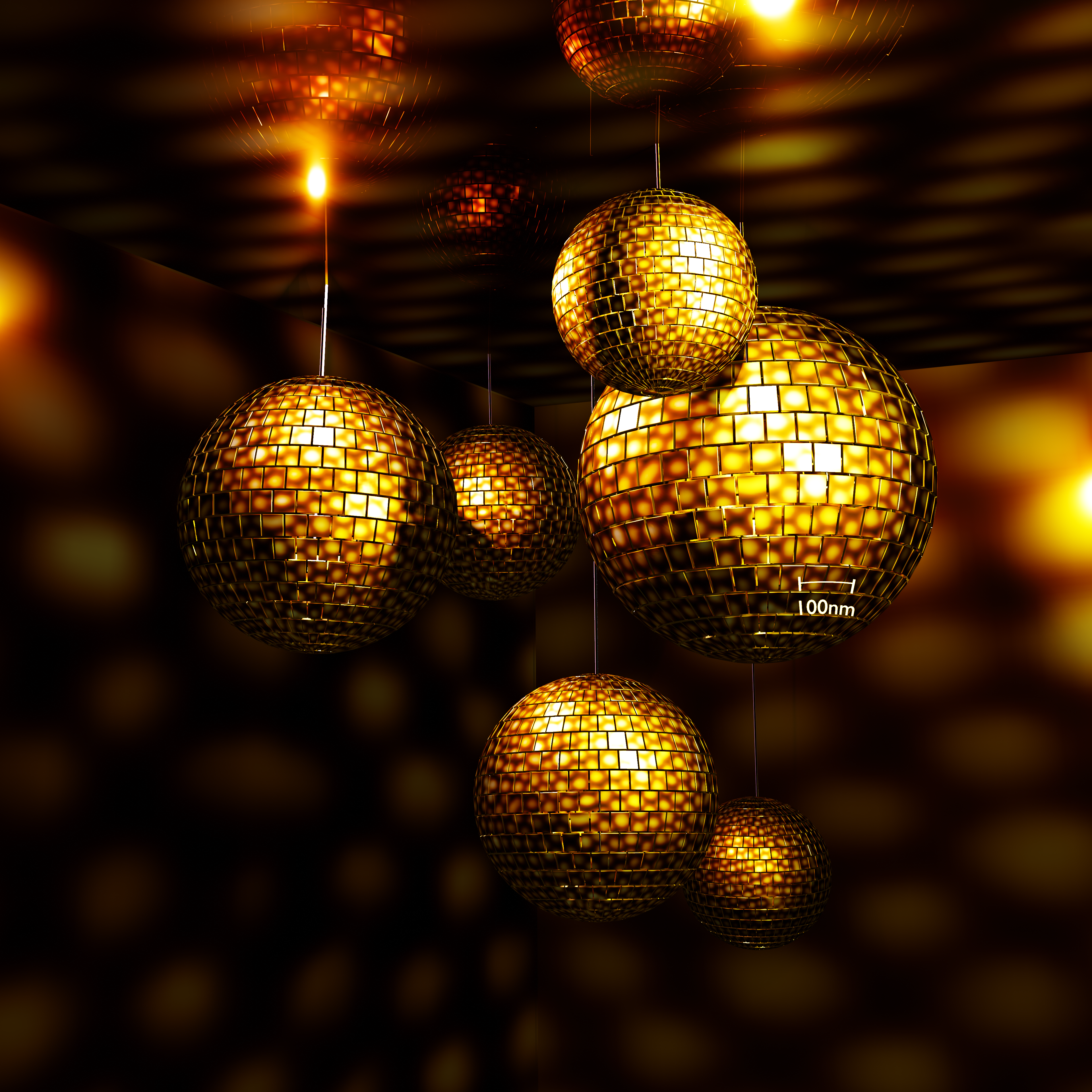
Disco in Nano
Artists: Kelly Liu (Graduate Student) and Lukas Michalek (Post Doc), Stanford University-Zhenan Bao Group
NNCI Site: nano@stanford
Tool: Bruker Dimension Icon AFM
The original AFM image of this design is of a SEBS-based elastomeric material recently designed in our group for use in soft and stretchable electronics. Their applications have shown promise towards achieving realistic healthcare technologies that are compatible with the human body and tissue. In recent studies, we discovered that under certain conditions, nano-scaled phase separations in the material cause it to form ordered, hexagonal patterns and trenches. In this image, we were inspired by the glittery visuals of the original images. We took advantage of their repeating and scalable patterns and distorted them into designs for disco balls and their reflections.
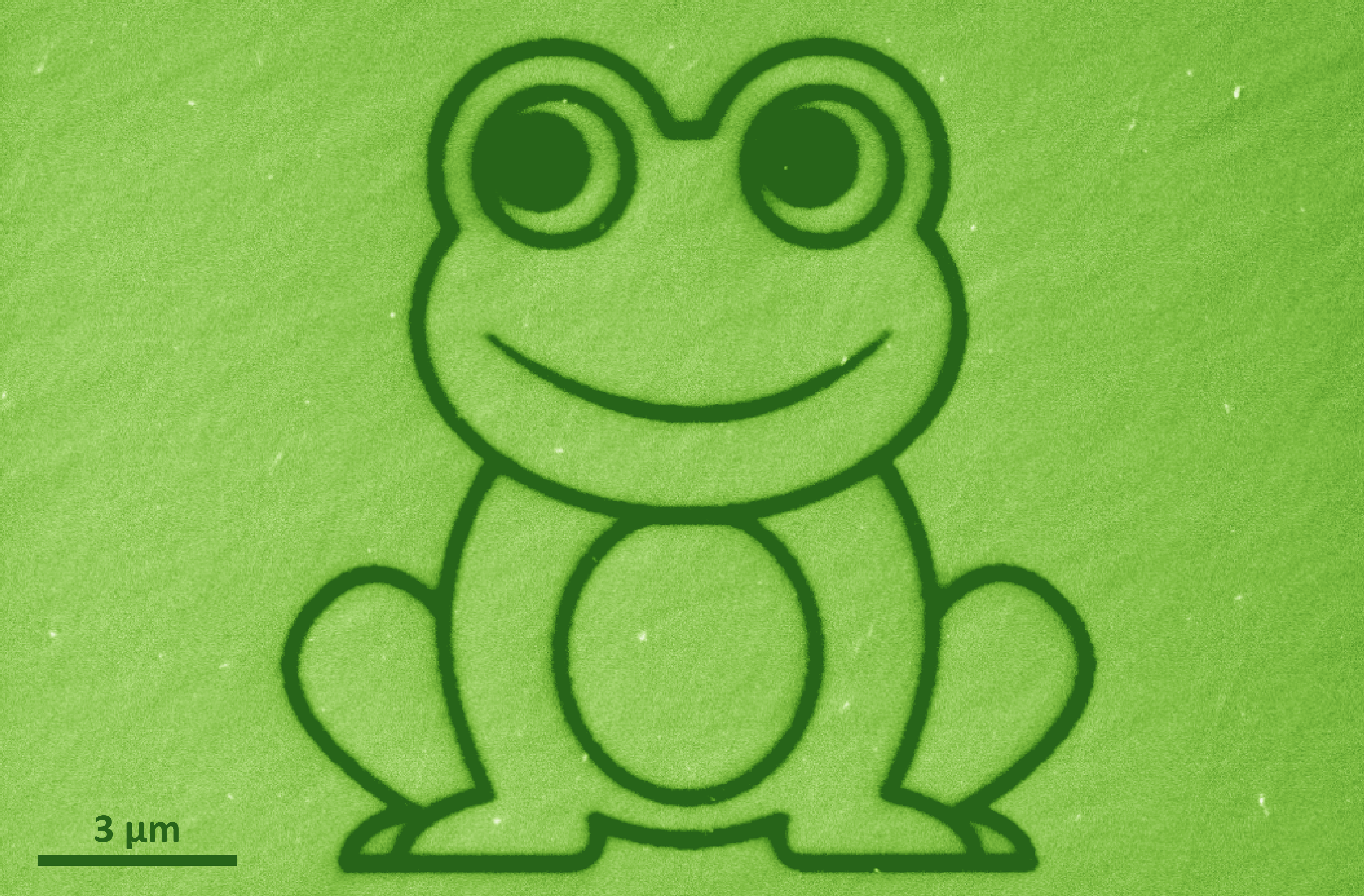
amFIBian
Artist: Stephanie Ribet, PhD Student, Northwestern
NNCI Site: SHyNE
Tool: JEOL 4700F FIB-SEM
Short Description: This amFIBian may only be 10 um across, but that doesn't stop him from being quite ribbiting. Pattern ion milled and image captured on the JEOL FIB.
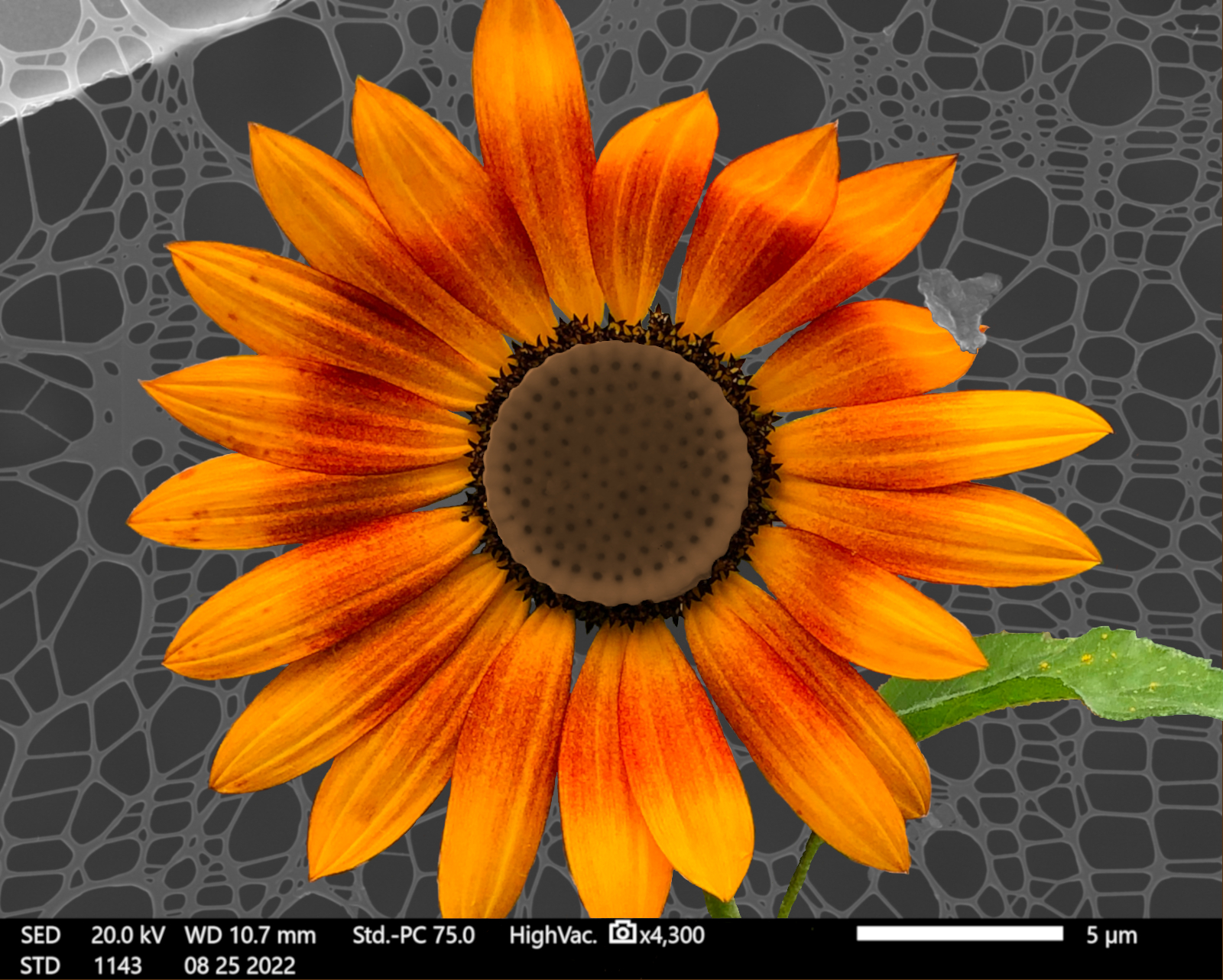
Algal Bloom
Artists: Cecelia Wood, Ph.D. Student; Sheri Singerling, NanoEarth Instrument Specialist
NNCI Site: NanoEarth
Instrument: JEOL IT500 SEM
Commonly referred to as algae, diatoms are microorganisms that are ubiquitous in almost every aquatic environment. This diatom, which is mounted on a lacey carbon TEM grid, was sampled from a freshwater drinking reservoir in Vinton, Virginia where my research group monitors water quality and conducts whole-ecosystem experiments. My research focuses on the iron and manganese nanoparticles that naturally form in the water column during reservoir oxygenation. While I prefer to focus on abiotic processes, I occasionally find critters in my samples! The diatom is digitally colorized and superimposed with an image of a sunflower growing in my backyard.
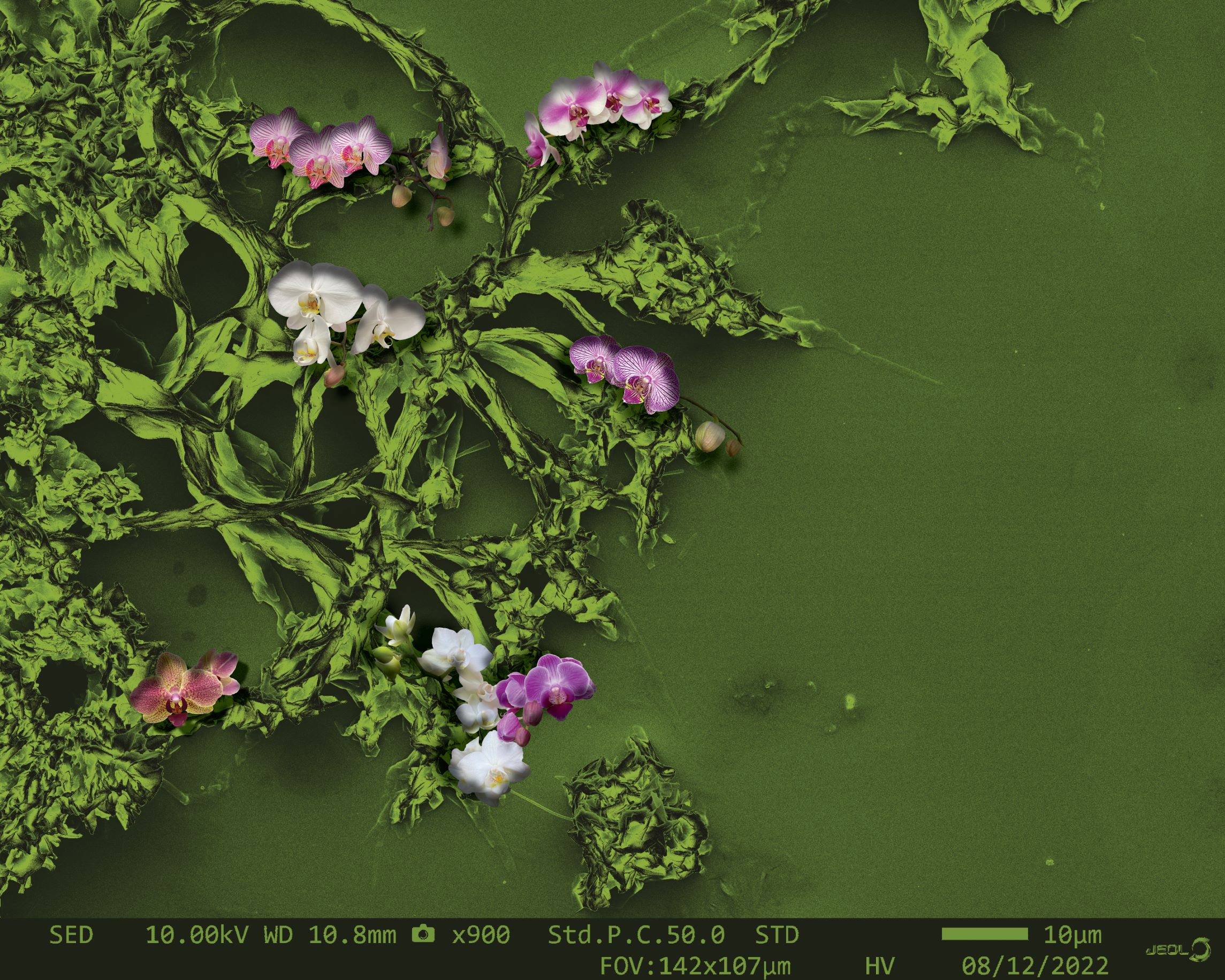
A Beautiful Failure: Learning from Experimental Imperfections
Artist: Anjali Kumari, Graduate Student, The Joint School of Nanoscience and Nanoengineering
NNCI Site: SENIC
Tool: JEOL JSM-IT800 Schottky FESEM, Adobe Photoshop, and Adobe InDesign
Caravaggio was a famous Italian painter who used vibrant colors to depict life’s imperfections. Some of his famous works contained fruits, which from far away looked fresh, but a closer look reveals that the fruits are rotten. Inspired by his artistic style, I used a similar approach to depict experimental imperfections. In my art, I created what seems like an orchid garden a closer look reveals ruptured cells due to an unsuccessful SEM sample preparation. This work represents the true nature of research where failures are common, but by learning from them, we can become better scientists.
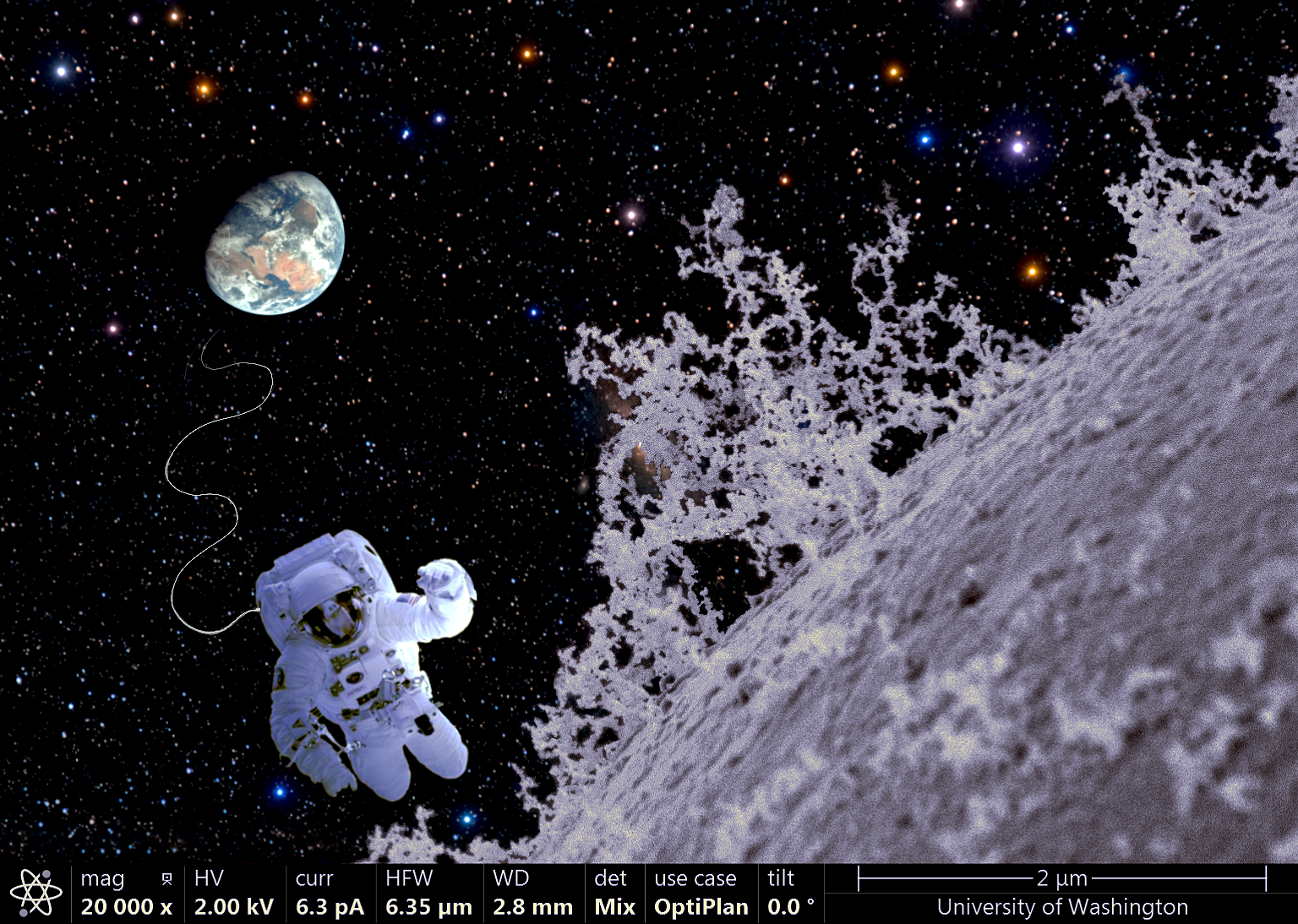
Space Debris
Artist: Sarah Waddell, Graduate Student, University of Washington, Materials Science & Engineering
NNCI Site: Northwest Nanotechnology Infrastructure (NNI)
Tool: SEM Apreo in the UW Molecular Analysis Facility
Titanium nanoparticles can be seen in networks upon spherical powder ejected during titanium 3D-printing. These nanoparticles are a byproduct of the laser-based printing process formed by the solidification of vaporized metal, creating an appearance similar to an alien planet.
Micro-Beach: Just a Little Fun in the Sun
Artist: Rose Pham, Grad Student, University of Kentucky
NNCI Site: KY Multiscale
Tool: Hitachi S-4300 SEM
SEM image of the broken edge of a tin dioxide wafer (left). False colored and cartoons added to show a fun day at the beach on a stair-like slope towards the ocean.
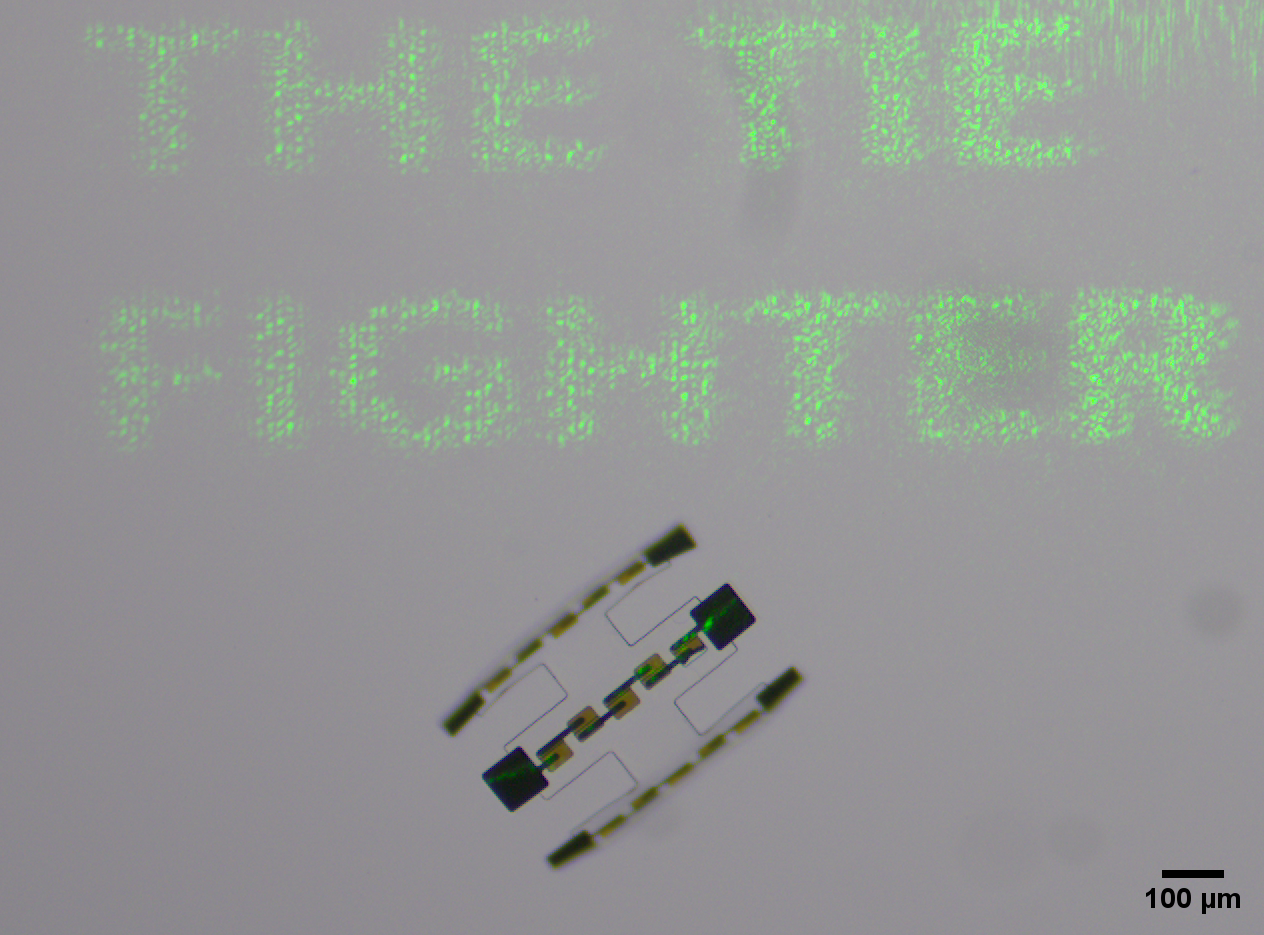
Microscopic TIE Fighter
Artist: William Reinhardt, Graduate Student and Lucas Hanson, Graduate Student, University of Pennsylvania
NNCI Site: MANTH
Tool: Nikon Eclipse TI2 Inverted Microscope
This image shows one of our various electronically-controlled microrobots dubbed "The TIE Fighter". Utilizing on-board solar cells, the robot is able to swim around its environment when illuminated by light. To precisely control and steer robots, we create holograms (such as the text you see in the image) out of laser light and feed them into the microscope field of view. This technique allows us to power robots individually, but also gives control over large groups of robots at the same time-- paving the way for future research into areas like swarming.

